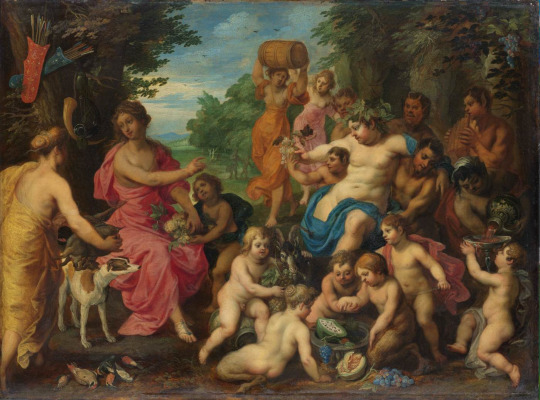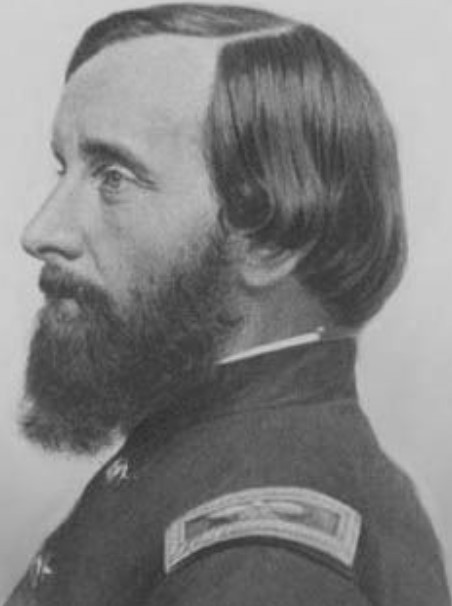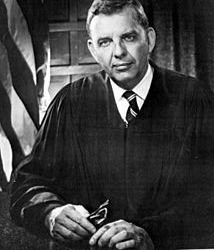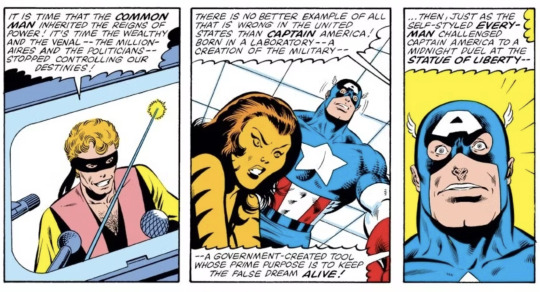#Continental Theater
Text

youtube
#Continental Theater#Oklahoma City#Oklahoma#Cinema Treasures#The Continental Theater#Barton Theatre Co.#Octoberr 21#1965#Oct 21 1965#The Greatest Story Ever Told#Max von Sydow#Youtube
1 note
·
View note
Text
every day I think about the licensed john wick immersive theater thing I went to last year. truly an all time experience. disneyland who. this experience did not encourage me to seek out immersive theatre generally, I just really loved the setting and the all-in, relaxed vibe of the crowd there. people took it seriously but not heavily, everyone dressed up, it was so inexpensive to get in but so lavishly produced
primary world fiction (…. nyc fiction specifically for me lawl) allows for this in a way that imo secondary worlds like star wars don’t, but then, I’ve still never been to galaxy’s edge and generally liked the limited interactions available at the pandora park
7 notes
·
View notes
Note
Now batfam as LEGAL life hacks
Dick: Regardless of your gender or sexuality, set your dating profile preferences to everyone. The more likes you get, the higher up the algorithm you'll be boosted
Jason: You can hit anyone as hard as you want if you glue a dead wasp to your hand
Tim: Don't like doing dishes? Grab some clean ones, run them under water, put them on the drying rack, and tell your family to do "the rest"
Damian: Start a raccoon removal business by releasing raccoons around someone's property before offering your services
Duke: If you want to see a movie in theaters without financially supporting it, get a ticket to a different movie showing at the same time
Cullen: Buy the cheapest ticket to a concert and once you're in, check Ticketmaster to see which seats haven't sold and move to the best one
Stephanie: No one will notice if you stop by a hotel in the morning for their free continental breakfast
Cassandra: Before snooping through someone's belongings, take a picture so you can put everything back the way it was
Barbara: Have a common name? There are probably people on LinkedIn who have a better CV than you. Their references are now yours
Harper: Selling a car? Take pictures of it in a nice neighborhood to make it seem classy and well-maintained
Carrie: If you miss an online sale by a few hours, use a VPN to switch to a timezone where it's still going on
Kate: End an unwanted phone call by turning on airplane mode—the other person will see it as the call dropped rather than you hanging up
Alfred: If someone's unexpectedly at the door and you're not sure if you need a weapon, a freshly boiled kettle is both the most threatening and inviting thing you can have in your hand
Selina: If you see someone shoplifting: no the fuck you didn't
Bruce: The number of living grandparents you have resets to 4 every time you get a new job
#you asked for legal not ethical#dick grayson#jason todd#tim drake#damian wayne#duke thomas#cullen row#stephanie brown#cassandra cain#barbara gordon#harper row#carrie kelley#kate kane#alfred pennyworth#selina kyle#bruce wayne#batfamily#batfam#batboys#batbros#batgirls#batkids#batsiblings#batman family#dc comics#tw swearing#life hacks#ask#anonymous#tw bug mention
1K notes
·
View notes
Note
Everyone is probably going to get mad but ima give you a approximate location.
They are close by the hospital that Kate used to work at. There is an arcade nearby that can be walked to. By the arcade there’s a movie theater that is within running distance to a comedy bar. They last checked in at a continental hotel and as of right now, they stopped at an ice cream shop.
-❕❔

49 notes
·
View notes
Photo

Battle of Cowpens
The Battle of Cowpens (17 January 1781) was a decisive battle in the southern theater of the American Revolutionary War (1775-1783). It saw a detachment of Continental soldiers and Patriot militia under Brigadier General Daniel Morgan defeat a British force under Lt. Colonel Banastre Tarleton. The battle helped lead to the end of British domination in the American South.
Background
On 2 December 1780, Major General Nathanael Greene rode into the American military camp at Charlotte, North Carolina. A 38-year-old Quaker from Rhode Island, Greene had been entrusted by General George Washington to take charge of the remnants of the Southern Department of the Continental Army after its disastrous defeat at the Battle of Camden (16 August 1780). What Greene found at Charlotte was less an army than a rugged gathering of 1,400 disheartened men. The troops were undersupplied, underfed, and lacked clothing. Several men sat huddled around the campfires practically naked, with only rags or blankets to protect them from the elements. Many of the soldiers stirred themselves only to plunder the surrounding countryside for food, and the officers had grown jaded enough not to care. It was a ghastly display of dejection that must have reminded Greene of the state of the main army at Valley Forge three winters before.
It was not hard to see why the army was in such a depressed state. The Americans had suffered nothing but defeat since the British had first invaded the American South in late 1778. Having grown frustrated with their unsatisfactory military campaigns in the North, the British had shifted their focus to the South, which was rumored to be replete with Loyalists as well as the source of much of the United States' commercial wealth. The capture of the South, it was believed, would not only cut the United States in two but also cripple its ability to keep fighting. The British implemented their so-called 'southern strategy' in December 1778 by seizing Savannah, Georgia; the following year, a Franco-American attempt to retake the city failed, and Georgia became the first state to fall back under British control. In May 1780, the British won the Siege of Charleston, taking the largest and most important city in the entire South. Under the command of Lord Charles Cornwallis, the British then set about pacifying the rest of South Carolina. This sparked a bloody regional civil war, as the state's Patriot and Loyalist militias brutalized one another in the South Carolina backcountry. The southern Continental Army, under General Horatio Gates, had tried to retake the state but had been decisively defeated at Camden.
Now, as Greene took over command of the depleted army from Gates, he realized the monumental task that rested upon his shoulders. Should he fail, there would be nothing to prevent Cornwallis from conquering North Carolina and Virginia, completing the British 'southern strategy'. Greene was a cautious commander who pursued a 'Fabian strategy'. That is, he tried to avoid fighting any pitched battle that he was not sure he could win, instead wearing the enemy down through attrition and guerilla fighting, striking only when he spotted vulnerability. The Patriot militias already operating in South Carolina could serve this purpose well; Greene hoped that they could keep the British distracted long enough for him to whip his army into shape and maybe find new recruits. However, he would need someone he could rely on to go down into South Carolina and keep the militias supplied and organized. As it happened, Greene already had just the man in mind.
Continue reading...
26 notes
·
View notes
Text
The myth of Dionysos (7)
I covered before two articles of the "Dictionary of Literary Myths". Here I bring you another loose translation of a thorough article covering Dionysos' legend, myth and god-self. However this time, it is an article coming from Félix Guirand's "General Mythology". It is a bit of an old article - originally written in 1937 - so some elements might be lacking or outdated, but Guirand's book and studied stayed a very influential and referential work when it came to mythology studies for a very long time, up to the early 21st century, so there is a legitimate interest to put it alongside other Dionysos articles throughout this series.
In the section about Greek mythology, Félix Guirand classifies Dionysos right after Demeter among the "earth gods" and "agragrian deities".

I/ Traits and attributes
Dionysos (etymologically speaking, the “Zeus of Nysa” seems, by analogies of his attributes and legends, to be the Greek version of the Vedic god “Soma”. His cult seems to have been born in Thrace: brought to Boeotia by settling Thracian tribes, it was then carried to the island of Naxos by Boeotian colonizers, before it finally started spreading over the entire archipelago, before returning to the continental Greece – first in the Attic region, and later in the Peloponnese. The character that was the primitive Dionysos complexified itself by borrowing traits from foreign deities – most notably the Cretan Zagreus, the Phrygian Sabazios, and the Lydian Bassareus. As such, Dionysos kept gaining new domains and powers as his characterization grew. It seems that Dionysos was originally simply a god of wine. From the spirit of wine, he became a god of vegetation and hot humidity, and from this point he evolved into the god of pleasures, then into the god of civilization, and finally, according to the Orphic traditions, he reached his apex as a manifestation of the supreme deity.

II/ Cult and depictions
Dionysos was honored throughout all of Greece, but the nature of his festivities and holidays varied depending on the regions and eras. One of his most ancient celebrations was the Agrionia, that came from Boeotia (most specifically Orchomenos): in its primitive form, the Bacchants killed a young boy in honor of the god. Human sacrifices were also practiced at Chios and Lesbos – they were however replaced by ritual flagellation. In the Attic region, it was the rural Dionysia that were celebrated: in December it was the Lenaea, holidays of the wine press, when the god was offered the first products of the wine-season. Then, at the end of February, came the Anthesteria, or “flowery celebrations”, that lasted three days during which the wine of the last harvest was tasted – in the Lenoeon sanctuary a procession was organized, followed by a sacrifice offered by the wife of the archon-king, and concluded by the offering of boiled seeds to both Dionysos and Hermes. The most famed and renowned celebrations of Dionysos were however the Great Dionysia, or urban Dionysia, at the beginning of March. It was during this festival that theater plays were organized. These nobles and respectful ceremonies were coupled with orgy-like celebrations all throughout Greece – such as the orgiastic celebrations on the slopes of the Cithaeron.
The physical appearance of Dionysos changed as his legend was modified. He first appeared in the same of a mature, bearded, middle-aged man wearing a crown of ivy. Then he became an effeminate and beardless ephebe, sometimes half-naked, barely covered by a “nebride” (a panther’s pelt or fawn skin), other times wearing a long dress identical to those worn by women. His head, which sported long curly hair, was crowned with vine and grapes – he was holding in one hand a thyrsus, and in the other either grapes or a drinking cup.

(Here I cut off parts III and IV of the article - I'll post them separately)
V/ Foreign deities associated with Dionysos
This exuberant wealth of legends is explained not only by the great popularity of the god, but also by the fact that Dionysos’ personality (as said previously) absorbed several foreign deities. Three in particular: the Phrygian Sabazios, the Lydian Bassareus and the Cretan Zagreus.
Sabazios, who was the supreme god of the Hellespontic Thrace, was a solar god from Phrygia. Very diverse traditions surrounded him: sometimes he was the son of Kronos, other times the son and lover of Cybele. His wife was either the lunar goddess Bendis, either Cotys/Cottyto, an earth-goddess similar to the Phrygian Cybele. Sabazios was depicted with horns, and the snake was his sacred animal. He was celebrated through nocturnal orgies. When later Sabazios was assimilated to Dionysos, the legends of the two gods intertwined. Some said that Sabazios has placed Dionysos within his thigh before entrusting him to the nymph Hippa ; others claimed that it was the opposite way and that Sabazios was Dionysos’ son. It is because of these parallels and links fome between the two that ultimately Dionysos’ native land was considered to be the Hellespontic Thrace.
Sometimes the Bacchants were called the “Bassarids/Bassarides”, and Dionysos himself sometimes wore the epithet “Bassarios” when he wore a long dress of Oriental style. One theory, presented by the lexicography Hesychios, was that it was a reference to the fox-skins the Bacchants used as clothing ; but another theory rather proposes the reading of these names as an allusion to an Oriental god absorbed by Dionysos. In Lydia, there was a god similar to the Phrygian Sabazios. This god was worshipped at Tmôlos, the same place where (according to the Orphico-Thracian tradition), Sabazios gave a child-Dionysos to Hippa. The Tmôlos later became one of Dionysos’ favorite residences. If this theory is correct, what was the name of this Lydian god? The hypothesis is that it might have been Bassareus – this Bassareus might have been a conquering deity, and it is because of him that the “far-reaching conquests” of Dionysos might have entered his legend. It was also probably because of Bassareus existence that Dionysos became involved in the legend of Aphrodite and Adonis, and maybe it was even because of this Bassareus that the legend of Ampelos came to be – this very beautiful young man that Dionysos was in love with, but who was killed by a wild bull he tried to tame. Dionysos, full of sorrow, asked the gods to turn Ampelos into vine.
As for Zagreus… Zagreus very probably started out as the Cretan equivalent of the Hellenistic Zeus, but under the influence of the Orphic mysticism he was identified with Dionysos, and this resulted in a new element of the Dionysos legend: Dionysos’ passion (in the Christian sense). Here is what was told about the Zagreus-Dionysos: He was the son of Zeus, and of either Demeter or Kore. The other gods were jealous of him, and thus conspired against him. He was ripped to pieces by the Titans, that then boiled his dismembered corpse. However Pallas saved the heart of the god: she brought it to Zeus, who destroyed the Titans with his thunderbolt, and from the still-beating heart he had Dionysos be born. As for Zagreus, whose remains were buried at the foot of the Parnassus, he became a chtonian deity qui, in the Underworld, welcomed the souls of the dead and helped their purification. To these sufferings and this resurrection, the adepts of the Orphism gave a mystical meaning/reading, and this deeply changed the character of Dionysos. He stopped being this rustic god of wine and joy that had descended from the mountains of Thrace – he even lost his trait as the “god of orgies and madness that came from the Orient”, no, this new Orphic Dionysos was, to take back Plutarch’s words, “the god who was destroyed, the god who disappears, the god who abandons life and then is reborn” – aka, a symbol of universal life.
As such, it is no surprise to see that in the Mysteries of Eleusis Dionysos was associated with Demeter and Kore ; because, like them, he embodied one of the great powers of fecundity in the world.

32 notes
·
View notes
Text
The Continental Release Date on Peacock
The Continental will have three 90-minute episodes, turning each chapter of the spinoff series into a mini-movie. As Lee now tells us, all three episodes are part of “one continuation,” and there won’t be any time jump between chapters. So, we’ll always be in New York City in 1970, with Colin Woodell replacing McShane as a young Winston and Ayomide Adegun portraying a young Charon. And when will the series be available? “in September,” Lee says.
John Wick: Chapter 4 is currently available in theaters. The Continental will premiere this September on Peacock. The series will be distributed in international markets through Prime Video.
175 notes
·
View notes
Text

This custom-built town car represented an experiment in body styling and design by famed industrial designer Raymond Loewy, who is seen here at the wheel on February 5, 1946.
The designer expected the comfort features of the model to be adapted to standard makes in the future. Built on a standard 1942 Lincoln Continental chassis, the car is six inches lower than standard cars without loss of headroom. The Plexiglass roof over the driver’s seat could be removed in warm weather. Blue glass portholes were an innovation in the rear dome. A plastic shield, hinged to the top, could be lowered between front and rear seats. A rear spotlight was an aid in parking and maneuvering in reverse, and a blue pilot light on an antenna rod flashed to identify the car quickly in a theater or hotel queue. The exterior was in black and deep brown, without a bright chrome finish. The simplified body treatment eliminated projecting hardware.
In 1963, Loewy designed a car for Studebaker that he called the Avanti. It is one of the most sought-after cars among collectors.
Photo: FM for the Associated Press
#vintage New York#1940s#Raymond Loewy#innovation#industrial design#car design#experimental car design#vintage NYC
42 notes
·
View notes
Text
Which Car Suits Them 1 (Pic HC)
Fandom: Blackstar Theater Starless
Pairing: None. Featuring K, W
Warning: None
Requested by: Anon
Prompt: What kind of sports car do you think suits each cast member? (and if it's not too much trouble,could we have pictures?)
A/N: Anon, how did you know I love sports cars? 😍 Can you guess which car is my favorite? 😜
---
Things I took into account:
Their style and personality
Whether they like luxury or prefer simplicity
Whether they like cute or sophisticated or mature things (and what style I think suits them)
———————————————
Kei
Bugatti Chiron Pur Sport

Sotetsu
BWM i8

Ginsei
Lamborghini Aventador

Yoshino
Toyota GR86

Yakou
Lexus RC F

Gui
Subaru BRZ

Kokuyou
Ford Mustang GT

Akira
Corvette Z06

Sin
Bentley Continental GT Mulliner

Takami
Tesla Roadster

Taiga
Maserati MC20

———————————————
➣ BlackStar Theater Starless Masterlists [1][2][3][4]
➣ Main Masterlist
➣ Buy me a Ko-fi?
➣ Commission: Open
➣ HC/Scenario Requests: Closed || Quick Ask Requests: Closed || GIF Requests: Closed
#bsts#blackstar theater starless#bsts kei#bsts sotetsu#bsts yakou#bsts ginsei#bsts gui#bsts yoshino#bsts kokuyou#bsts akira#bsts sin#bsts taiga#bsts takami
26 notes
·
View notes
Text
Hi. Um. So...
I've been quietly working on a really, really big, beautiful, maddening, PUNK AS FUCK collaborative DIY art project for about a year now with a whole bunch of people I've known for a loooonnng time and love a whoooole bunch.
I don't just believe in them as musicians. I believe in them as vibrant, brilliant, fiercely kindhearted human beings who make completely unclassifiable music and theatrics and wonderful community happen, and who deserve to be lifted up and celebrated and nurtured.
We FINALLY launched their Kickstarter today, after many months of collective work. Much to my delight, said Kickstarter has already made OVER FIFTY THOUSAND DOLLARS in less than five hours.
Hopefully we will double that amount by the end of the campaign (and THEN some) and my favorite live band of all time, Sleepytime Gorilla Museum, can feed themselves and keep roofs over their heads, their family's heads, their crew's heads, while the band woodsheds and the full team preps to finish and release a studio album and a short film and then (WE HOPE! 100K OR BUST!) pile back into their magical doomsday bus and tour the continental US once again for the first time in 13 years.
I wouldn't be doing this for any other band. Not even one of my own projects. That is how much I love Sleepytime Gorilla Museum, and how deeply I respect what they make and who they ARE.
Go check out the campaign! Pitch in if you're inspired! Share the link far and wide if you care about me EVEN A LITTLE BIT PLZ AND THANK YOU because this job'll earn me a substantial paycheck as well, but ONLY if we're fully funded.
AMBUGATON.
https://www.kickstarter.com/projects/sleepytimegm/sgm2024
#SGM2024#sleepytime gorilla museum#kickstarter#crowdfunder#music#avant garde#experimental#black metal
33 notes
·
View notes
Text
THIS DAY IN GAY HISTORY
based on: The White Crane Institute's 'Gay Wisdom', Gay Birthdays, Gay For Today, Famous GLBT, glbt-Gay Encylopedia, Today in Gay History, Wikipedia, and more … December 22


1823 – The American author, abolitionist, and soldier Thomas Wentworth Higginson was born today in Cambridge, Massachusetts (d.1911). The Higginson clan was quite pedigreed. Thomas was a descendant of a Puritan minister, a member of the Continental Congress, and the founder of the Boston Symphony Orchestra. He was active in the American Abolitionism movement during the 1840s and 1850s, identifying himself with disunion and militant abolitionism. During the Civil War, he served as colonel of the 1st South Carolina Volunteers, the first federally authorized African-American regiment, from 1862-1864. Following the war, Higginson devoted much of the rest of his life to fighting for the rights of freed slaves, women and other disenfranchised peoples.
Higginson has largely been forgotten to history except in the last few years when Brenda Wineapple's book White Heat was published to great accolades. In the book Wineapple posits an intense relationship between Higginson and his penpal, the poet Emily Dickinson. They only met twice but the title of Wineapple's book suggests a more intimate relationship. Interestingly (or not) Wineapple makes no mention in her book of William Hurlbert, the handsome Southern journalist that Higginson was just crazy about. A very telling omission because Higginson's famous "Letter to a Young Contributor" (the Atlantic essay that Dickinson first responded to and started their correspondence) alluded to "Cecil Dreeme," the very queer title character in Theodore Winthrop's 1861 novel by the same name. Dreeme was based on Hurlbert, of whom Higginson once remarked:
"I never loved but one male friend with passion—and for him my love had no bounds—all that my natural fastidiousness and cautious reserve kept from others I poured on him; to say that I would have died for him was nothing." Now there's some "White Heat."
In Higginson's book Army Life in a Black Regiment (1870) he exhibits an erotic fascination with black skin and bodies:
"I always like to observe [black soldiers] when bathing,—such splendid muscular development, set off by that smooth coating of adipose tissue which makes them, like the South-Sea Islanders, appear even more muscular than they are. Their skins are also of finer grain than those of whites, the surgeons say, and certainly are smoother and far more free from hair."
Whitman scholars like Ken Price have noted that Higginson's later attacks on the gay aspects of Whitman's poetry may have been a case of "pot calling the kettle black" given the "tonalities" in Higginson's writing and relationships.


1899 – Gustaf Gründgens (d.1963), one of Germany's most famous and influential actors of the 20th century, intendant and artistic director of theatres in Berlin, Düsseldorf, and Hamburg. His career continued undisturbed through the years of the Nazi regime, but the extent to which this can be considered as deliberate collaboration with the Nazis was hotly disputed.
Born in Düsseldorf, Gründgens after World War I attended the drama school of the Düsseldorfer Schauspielhaus and started his career at smaller theaters in Halberstadt, Kiel, and Berlin. In 1923 he went to the Kammerspiele in Hamburg, where he also appeared as a director for the first time, co-working with the author Klaus Mann, son of Thomas Mann, and his sister Erika Mann. Gründgens, who meanwhile had changed his first name to "Gustaf", married Erika in 1926. However, they divorced three years later.
In 1928 he moved back to Berlin to join the renowned ensemble of the Deutsches Theater under director Max Reinhardt. Apart from straight theatre, Gründgens also worked with Otto Klemperer at the Kroll Opera, as a Kabarett artist and also as a movie actor, most notably in Fritz Lang's 1931 film M, which decisively added to his popularity. From 1932 he was a member of the Prussian State Theatre ensemble, first scintillating as Mephistopheles.
Gründgens' career proceeded after the Nazi Machtergreifung: in 1934 he became "Intendant" of the Prussian State Theatre; though constant attacks on his homosexual orientation made him ask the Prussian Minister President Hermann Göring for his discharge after the Night of the Long Knives. Göring rejected the request and instead appointed him a member of the Prussian state council to ensure his immunity.. In 1941, Gründgens starred in the propaganda film Ohm Krüger and also in Friedemann Bach, a film he also produced. After Goebbels's total war speech on 18 February 1943, Gründgens volunteered for the Wehrmacht but was again recalled by Göring, who had his name added to the Gottbegnadeten list.
Imprisoned by the Soviet NKVD in 1945, Gründgens was released thanks to the intercession by the Communist actor Ernst Busch, whom Gründgens himself had saved from execution by the Nazis in 1943.
From 1936 till 1946, Gründgens was married to the famous German actress Marianne Hoppe. The wedlock was widely seen as a lavender marriage.
Posthumously, Gründgens was the subject of a novel entitled "Mephisto" by his former brother-in-law Klaus Mann, who had died in 1949. The film version was a huge commercial and critical success winning the Academy Award for Best Foreign Language Film in 1981.


1919 – On this date G. Harrold Carswell, Richard Nixon's unsuccessful nominee for the Supreme Court, was born (d.1992). He was rejected for being a mediocre nominee and for his voiced support for racial segregation during an unsuccessful election bid in 1948. He was also against women's rights. In defense against charges that Carswell was "mediocre", U.S. Senator Roman Hruska (Republican, Nebraska) stated: "Even if he were mediocre, there are a lot of mediocre judges and people and lawyers. They are entitled to a little representation, aren't they, and a little chance? We can't have all Brandeises, Frankfurters and Cardozos." Talk about damning with faint praise!
The remark was criticized by many and is believed to have backfired and damaged Carswell's cause. Probably a good thing. It would have been very embarrassing to the Court when, several years later, he was convicted of "unnatural and lascivious advances," the result of propositioning an undercover police officer in a Florida men's room. Carswell subsequently withdrew from public life.


1959 – Norbert Bischoff, born in Meyenburg, Germany, was a German songwriter (d.1993).
Bischoff worked for the Leipzig song group and moved to Berlin in 1976.
From 1983 he performed his own songs. He was one of the first musicians in the GDR to openly address homosexual issues. In 1984 he released the song Truly a Place to be Happy about the dealings in pubs, and the program Sorry, I'm Gay. In late 1984 was hired by the Ministry of State Security, getting the job as a casual employee with with a fake resume. Bischoff quit after a short time.
In 1985, at the GDR Chansontage in Frankfurt on Oder, he received the General Director's Prize at the Committee for Entertainment Art for his program Excuse me, I'm the Gay One and since that year has been working as a freelance singer. Some of his songs were recorded on GDR radio. His song He says he is serious about a GDR neo-Nazi was banned.
In 1986 and 1990 he was a contributor to the Festival of Political Song in Berlin. In September 1989 he was one of the signatories of the resolution by rock musicians and songwriters calling for change in the GDR.
In the early 1990s he appeared with his band as Norbert Bischoff & Gesellschaft (Society). The band included Tina Tandler, Lexa Thomas, Bert Wrede, Norbert Grandl, and Juwe Andrees.
On November 9, 1993, Bischoff took his own life, frustrated by developments in reunified Germany. He left the note: "The right date to disappear for a German."
The CD: "I Don't Want to Wait any Longer - last songs by Norbert Bischoff", was released posthumously in 1994.



1960 – The American artist Jean-Michel Basquiat was born on this date (d.1988). Basquiat was born in Brooklyn, New York, to a Puerto Rican woman and a Creole man. Because of his heritage, and his visits to Puerto Rico, Basquiat was fluent in French, Spanish and English by the age of eleven, and was able to read and write in all three languages. He showed artistic abilities at an early age but struggled in school, finally dropping out of high school.
In 1974, Jean-Michel moved to Puerto Rico with his family, who lived there for two years. It was there he experienced the first of many homosexual encounters; on one occasion he was orally raped by a barber. Upon the family's return to America, Jean-Michel dropped out of school and frequently ran away from home. At the age of 15, he absconded from his father, who caught him having sex with a male cousin and tried to kill him. Basquiat was a bi-sexual. His first sexual encounters were gay, and as a teenager he ofter worked as a gay street hustler, though later in his life he had many famous and infamous relations with women, including Madonna.
In the late 1970s Basquiat began spray-painting graffiti on buildings in Lower Manhattan, working under the pseudonym SAMO. When the Village Voice published an article about the graffiti, the artist ended the project by inscribed "SAMO IS DEAD" on the walls of SoHo buildings in 1979.
He started appearing on live public-access cable show and performing with noise rock bands. Finally in 1980, Basquiat participated in his first major show and received coverage in Artforum magazine, which brought Basquiat to the attention of the art world. This led to his joining a gallery in SoHo and showing regularly and an invitation to meet Andy Warhol who became a collaborator.
By 1985 he was appearing on the cover of The New York Times Magazine in recognition of his success as a leading artist of the period. After Warhol died on February 22, 1987, Basquiat became increasingly isolated, and his heroin addiction and depression became more severe. He died of a heroin overdose in his art studio on August 12, 1988, at the age of 27.
Basquiat's work has undergone major and influential exhibitions at the Whitney Museum of American Art and the Brooklyn Museum. On May 15, 2007 an untitled Basquiat work from 1981 sold at auction in New York for US$14.6 million. In 1996, seven years after his death, a biopic titled Basquiat was released, directed by Julian Schnabel, with actor Jeffrey Wright playing Basquiat. A 2009 documentary film, Jean-Michel Basquiat: The Radiant Child, directed by Tamra Davis, was first screened as part of the 2010 Sundance Film Festival.


2000 – Joshua Bassett is an American actor, singer and songwriter. He is known for his starring role as Ricky Bowen in High School Musical: The Musical: The Series.
Bassett was born and raised in Oceanside, California, and was home-schooled.
His first introduction to musical theater was at age 7, over a decade before he starred as Ricky in High School Musical: The Musical: The Series, when he was in a community theater production of High School Musical as J.V. Jock No. 2. Since then, Bassett has starred in over 30 musical productions.
He moved to Los Angeles when he was 16 years old to start acting, living in his car for some time to get by.
Bassett sings and plays piano, guitar, ukulele, bass, drums, and some saxophone. On May 10, 2021, he came out as a member of the LGBTQ+ community during an interview.
In December 2021, Bassett disclosed that he experienced sexual abuse as a child and teen.

2010 – President Obama signs the repeal of "Don't Ask, Don't Tell."


17 notes
·
View notes
Text
Captain America: Making of a War Hero into a Symbol of Hope

We all know that Captain America debuted in a title named after him by Joe Simon and Jack Kirby in 1941. He was seen punching Hitler right in the face but many may not know that this was done well before the US had decided to enter World War 2. In fact, at the time, the US was more concerned about its Pacific theater than the Atlantic. Nevertheless, Timely publishes the issue and Captain America gets established as a war hero from the start, who alongside his sidekick Bucky, is fighting fascism in continental Europe which is falling to the Reich like a house of cards
Cap at the time is the symbol of Freedom, anti-fascism, or as he would later be called the Sentinel of Liberty but there was one thing missing at Marvel. The House of Ideas lacked an inspiring figure like Superman among its flagship characters. The Fantastic Four, Spider-Man, The Incredible Hulk, The Invincible Iron Man, and even the Avengers had issues with themselves as well as with each other but a figure whom readers can look up to was something not present. Cap remained a 'man out of time' when he gets discovered by the Avengers but it takes a decade for writers to get him accustomed to the realities of America that were haunting the country from the streets to the Oval Office (Thank You, Jack Kirby and Steve Englehart)

Well into the bronze age era of comics, and under Jim Shooter's reign of the bullpen, a young J.M. DeMatteis shows his potential for storytelling with his first assignment of Captain America no. 261 which would introduce Nomad to the readers for the first time. This issue was supposed to be a collaboration with the real-life Captain America TV movie starring Reb Brown but Jim had other ideas. Issues 261-263 would find Steve Rogers going to California to meet Galactic Films for the upcoming movie about him (in Earth-616) but his real mission was to investigate Nomad's activities on the streets of LA which would turn out to be a deep conspiracy by one of his oldest arch nemesis

After becoming a regular writer on the Captain America series, DeMatteis, Mick Zeck, and John Beatty wrote a story that was way ahead of its time. Today's resurgence of the far left in the world and in the US and the reactionary rise of the far right was being seen by comic book writers like DeMatteis way before many had thought of it. Surprisingly it was a feeble populist villain by the name of Everyman doing the talk, not the Red Skull

In the story, the disenfranchised youth who looked up to Everyman realize their mistake of choosing 'despair over hope' but what causes them to see this is the humility Cap showed despite being spit at multiple times (literally). His eagerness to listen to the young, to the future of the country and their grievances with America, the American Dream leads to a change of heart

This single-issue story would showcase Cap in a different light. Steve Englehart had given Cap a rude awakening that patriotism can't come at the expense of truth and justice in Secret Empire. He showed Cap's disillusionment with the powers that be in America. DeMatteis took the opposite route to show Cap what's corrupting the country's future, and giving rise to the 'enemy within' who can cause anarchy. It wouldn't be wrong to say that Christopher Nolan's Bane (Dark Knight Rises) reminds us of Everyman but what's important to remember is that it was J.M. DeMatteis who warned us before anyone else did
This story is just the tip of the iceberg. The entire run by DeMatteis is one of the most underrated as it gets overshadowed by the works of Jack Kirby, Steve Englehart, and Mark Gruenwald. Like his works for Spider-Man and Doctor Strange, his work for Cap remains one of the best runs ever
13 notes
·
View notes
Text

When I saw the first John Wick movie, I actually liked it. It was a revenge movie (he’s after the Russian goons that killed his beloved puppy). Sure, it was ultra violent but the fight scenes were stylish and I t introduced some novel concepts like the Continental.
I saw a couple of the sequels, but they were just rinse-and repeat with less style and more death and mayhem.
This year Hollywood offered us two contenders for a piece of the pie that John Wick baked. The first was Monkey Man, written and directed by Dev Patel. It too involved revenged (the cop that killed his mother) and an endless line of thugs for him to kill. The twist? He was aided by a transgender hijra community!
This week we got Boy Kills World starring Bill Skarsgård (famous as Pennywise the Dancing Clown in Stephen King’s It). He’s out for revenge too - the evil dictator who killed his mother and sister. The twist in this epic is that it’s a comedy. That is, if you find an endless line of thugs and innocent bystanders getting slaughtered is funny.
Skarsgård plays an unnamed Boy who survived a firing squad. He’s trained (and tortured) by a Shaman who wants him to kill the people that killed his mom & sister. The shaman is always blowing hallucinogenic smoke in the boy’s face. This made me wonder how much of the story we’re seeing is real.
BTW, the boy is also deaf and mute. As he grows older he forgets the sound of his own voice, so he imagine to be like the announcer of his childhood favorite video game. So throughout the movie we hear his thoughts voiced by H. Jon Benjamin of Bob’s Burgers and Archer fame.
Anyway, like John Wick and Monkey Man before him, the Boy kills Thugs (or the World as the title suggests)… lots and lots of thugs. There is a major set piece towards the end set in a theater with a winter theme… snow, igloos, and snowmen. I think it’s suppose to be funny, it not.
Oh, I forgot to mention… throughout the movie, in between killing thugs, the boy sees a hallucination of his young sister. These scenes are the best in the movie. Actress Quinn Copeland does a good job in an R Rated movie that she’s too young to see.
Neither Boy Kills World or Monkey Man are as clicker as John Wick or even John Wick sequels. Boy Kills World’s biggest problem is that it doesn’t known when to end. There’s a point when you think the story is over, yet it introduces another long and bloody slugfest. And when that’s over, there’s yet another bloody and long slugfest. Enough already!
Boy Kills World does answer a few Hollywood Mysteries:
It shows the reason why Famke Janssen will not play Jean Gray in the post MCU/X-men movies. (She’s starting to look like Katherine Helmond in the movie Brazil.)
It’s explains what happens when your post Downton Abbey career fails. (I’m talking to you Michelle Dockery).
#John wick#monkey man#boy kills world#Bill Skarsgård#revenge plot#michelle dockery#famke janssen#another long and bloody slugfest#H. Jon Benjamin of Bob’s Burgers#endless line of thugs to kill
8 notes
·
View notes
Text
Elvis interview; August 7, 1956 — St. Petersburg, Florida
Elvis interviewed backstage at the Florida Theatre by Bob Hoffer
-----------------------------------------------------------------------------------------------
The whole interview is great, but the beginning of it got me laughing hard for about 10 minutes (and it happens again and again).
Elvis: Is that your wife over the corner?
Bob: Yes, it's my wife, Joanne.
Elvis: *Looks at her* WOOO!
Everybody: *Laughter fills the room*
Bob: Now, Joanne will be the envy of everybody at the platter party tonight. She has been wooed at by Elvis Presley. And thank you, Elvis. I agree with you incidentally. Sure, I do.
I laugh hard at this. EP was an amazing guy. So funny, so spontaneous. His way of breaking the ice with little funny comments and at the same time keep his charm... The way he made people feel appreciated... What a great personality this boy had! A masterpiece of a human being. ♥
youtube
Elvis performed three shows in the Florida Theater in St. Petersburg, Florida. Elvis played three shows on Tuesday, August 7, 1956, at 3:30pm, 7:00pm and 9:00pm.
On this interview, August 7th, Elvis talks about his car being damaged by his fans in Tampa, Florida (August 5th). Elvis had just bought a Lincoln Continental Mark II. His fans usually wrote their names, phone numbers and leave lipstick kisses marks all over his cars, but this time they actually took parts of his brand new Continental Mark II. They took his car's gas cap and cigarette lighters as souvenirs. Even so, Elvis don't blame it on them. He blamed it on the garage! EP was an understanding guy, so he felt that, even tho it affected him financially, it was only natural the kids wanting to take something from him to save it as a memento (they even tored his clothes off his body sometimes, so it wouldn't be out of the ordinary if they would do something like that with his car too.)

#elvis presley#elvis the king#elvis fans#elvis fandom#elvis#elvis history#50s elvis#elvis interview#florida#Youtube
18 notes
·
View notes
Photo

Battle of Camden
The Battle of Camden (16 August 1780) was a major battle of the southern theater of the American Revolutionary War (1775-1783). It saw a British army under Lord Charles Cornwallis decisively defeat an American force under General Horatio Gates, thereby securing British control of South Carolina and allowing Cornwallis to invade North Carolina.
Background: Fall of Charleston
On 29 March 1780, over 12,000 British and German soldiers under the command of Sir Henry Clinton dug in outside the landward walls of Charleston, South Carolina, and began to lay siege. Over the course of the next six weeks, the British siegeworks crept closer to the city walls, as the ubiquitous roar of artillery echoed in the sky. Charleston was, at the time, the largest and most important city in the American South. Its capture would provide the British with a base from which to launch an invasion of the South, one of the most economically significant regions of the United States. The exports of southern cash crops such as indigo, rice, and tobacco were used to fund the American war effort; should the South fall back under British control, the US would lose access to this major source of revenue and would be less capable of military upkeep. The amputation of the South from the body of the United States would, it was believed, be the fatal blow to the young republic.
This was a fact that Major General Benjamin Lincoln, commander of the Southern Department of the Continental Army, knew all too well. As the British completed their entrapment of his army in Charleston, Lincoln knew that time was running out for both his army and the South, and he could only hope that help was on its way. General George Washington, commander-in-chief of the American forces, was unable to come to Lincoln's aid himself, as he was currently in New Jersey with the main army keeping an eye on the sizable British force in New York City. However, Washington was able to spare two regiments of Continentals (or regular soldiers), sending them south under the capable command of Major General Johann de Kalb. Simultaneously, the 380 troops of the 3rd Virginia Regiment under Colonel Abraham Buford crossed into South Carolina, intent on coming to Charleston's defense.
But before either of these detachments could arrive to reinforce the city, Lincoln's hand was forced. By early May, Clinton's siegeworks had approached the city walls, allowing the British to unleash an artillery barrage that engulfed the wooden buildings of Charleston in flames. Unwilling to subject his army and the city's residents to further carnage, Lincoln surrendered on 12 May; at least 2,500 Continentals were taken prisoner (the British reported over 5,000 prisoners), and Charleston was occupied by the British. Clinton then set about pacifying the state of South Carolina, offering pardons to any Patriot militiamen willing to change sides and fight for the British; as a result, the British were able to recruit nearly 4,000 men for their Loyalist militias over the summer.
Clinton also dispatched Lt. Colonel Banastre Tarleton, and his infamous unit of elite Loyalists known as the British Legion, in pursuit of Colonel Buford's Virginians. On 29 May, Tarleton attacked Buford at the Battle of Waxhaws on the border between North and South Carolina. The battle quickly devolved into a bloodbath, as Tarleton's troops allegedly massacred the Continental soldiers while they were trying to surrender; this led the Patriots to coin the phrase ‘Tarleton's Quarter' to refer to the brutality of British officers. With the elimination of Buford's regiment, the last remnants of the American southern army had been destroyed, leaving the South open to British subjugation.
Satisfied with this outcome, Clinton returned to New York City in early June, leaving his second-in-command, Lord Charles Cornwallis, in charge of finishing the pacification of South Carolina. This was easier said than done, as the brutality of Waxhaws inspired hundreds of men to join Patriot militias that were sprouting up across the South Carolina backcountry. Men like Thomas Sumter, Francis Marion, and Andrew Pickens led small bands of partisan fighters on attacks against British and Loyalist troops, frustrating Cornwallis' attempts to solidify his authority in the region. As the weeks wore on and Cornwallis' grip on South Carolina began to slip, the Patriots spotted a chance to regain control of the state. But to do so, they would have to rebuild their southern army fast.
Continue reading...
19 notes
·
View notes
Text




SADIE "DEE" LENNOX, Concierge of the London Continental
Personality : Witty, sarcastic, sociable, blunt, actually really nice
Born : May 26, 1982
OOC
F/C: Phoebe Tonkin
V/C: Eloise Bridgerton (Bridgerton)
-> Relationships
WUXIA DJ — College best friends
Marquis de Gramont — Knew him through DJ, remained friends
Sylvan King — Boss and employer
Backstory :
Sadie was born to upperclass parents, with two other half siblings. Growing up, she spent most of her time as a child dedicated to learning about history and music. Eventually, she met the DJ who is still a close friend of hers. She wanted to try everything in life— landing her a job as a hitwoman.
She had everything in life, and should have been content but her mind was naturally curious and she itched to do greater things and after being a ruthless hitwoman, she eventually settled as a concierge for the London Continental, accepting that life can only give her what she needs.
Trivia Time!
She’s a theater kid!
Her favorite song is Ballad of Jane Doe(she can sing it really well)
She used to hate comfortable and relaxed jobs until she gave the role of concierge a shot!
She knows English and French
Sadie doesn’t know how to analyze emotions(she is autistic, please respect that, thank you)
Her fashion is greatly influenced by the people around her wether she likes it or not
Still keeps in contact with the DJ (I really liked her)
Marquis disliked her because she would sing musicals out of the blue and it would scare him
DJ found it amusing!
#Sadie Lennox#john wick oc#jw oc#is it clear i like Bridgerton#That’s very british of me#Im sorry☹️#‼️‼️‼️Also I dont plan her with any romantic relationships‼️‼️‼️#I love theater and musicals
5 notes
·
View notes